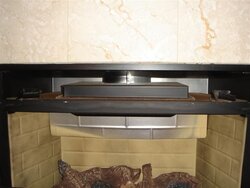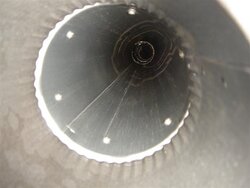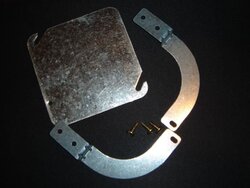In my livingroom is a Heat-n-Glo direct vent fireplace. It worked fine as late as last winter.
But this winter, the pilot and the burner go out within 30 minutes of ignition on average. The fireplace stayed on for more than 2 hours on just one occasion out of 6 that I've tried.
Some observations that may or may not explain the cause of the problem are (some of them may have existed in previous winters when the fireplace was working fine):
(1) I can feel considerable downward, cold airflow from the vertical vent. I'm assuming it's the combustion air from the outer layer of the coaxial vent. Anyways, the air current is strong enough for you to know something is coming down from above.
(2) When the burner is on, my wife says she can smell gas. There is no smell of gas when only the pilot is on. She says she starts to smell it when the burner goes on.
(3) The pilot can stay on for days, as long as we don't turn on the burner. It goes out, along with the burner flame, only after the burner goes on.
(4) I'm not a professional, so I can't be sure, but there doesn't seem to be any clogging or debris around the pilot. I tried to air gun the pilot with a compressed air can to make sure. That didn't help.
I'm going to call a professional, but if it's something easy to fix, I'd like to do it on my own and save money.
But this winter, the pilot and the burner go out within 30 minutes of ignition on average. The fireplace stayed on for more than 2 hours on just one occasion out of 6 that I've tried.
Some observations that may or may not explain the cause of the problem are (some of them may have existed in previous winters when the fireplace was working fine):
(1) I can feel considerable downward, cold airflow from the vertical vent. I'm assuming it's the combustion air from the outer layer of the coaxial vent. Anyways, the air current is strong enough for you to know something is coming down from above.
(2) When the burner is on, my wife says she can smell gas. There is no smell of gas when only the pilot is on. She says she starts to smell it when the burner goes on.
(3) The pilot can stay on for days, as long as we don't turn on the burner. It goes out, along with the burner flame, only after the burner goes on.
(4) I'm not a professional, so I can't be sure, but there doesn't seem to be any clogging or debris around the pilot. I tried to air gun the pilot with a compressed air can to make sure. That didn't help.
I'm going to call a professional, but if it's something easy to fix, I'd like to do it on my own and save money.





